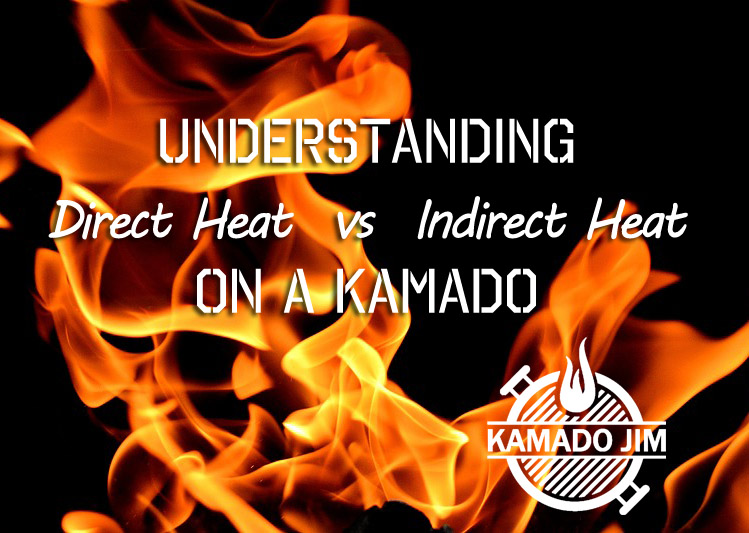One of the most important (and often overlooked) things to learn when cooking on a grill is when to use direct and indirect heat. For new grillers, this can be a little confusing as most blogs assume that you already know what indirect and direct heat is used for and how to achieve it. However, if you’ve ever read a BBQ recipe that talks about direct heat, or pondered at the removable deflectors on your Kamado, then this post is for you.
Understanding Indirect and Direct Heat
The primary difference between direct and indirect heat is where your food is placed in relation to the fire. While some people prefer to really only use one or the other, for the best grilling results you’ll want to use a combination and change your setup depending on what it is you’re grilling. We’ll go into more specifics of what each is used for below.
Direct Heat
Direct heat is what most people think of when they think about grilling. The classic setup where you have the charcoal in the bowl, the grill on top, and the flames licking the meat is using direct heat. With direct heat, you can sear and char meat and often get some really nice grill marks on your steaks or burgers. However, you also will have the disadvantage of uneven cooking, and sometimes it will take longer depending on what you’re grilling.
Indirect Heat
Indirect heat is probably the most common way of cooking on a Kamado. With this method, there is a deflector plate between your food and the flame. The heat is diffused around the plate and evenly heats the food. While indirect heat will cook things far more evenly, it has the disadvantage that you don’t want to open the grill or else you’ll lose your temperature and have to reheat the inside.
Should I Use Direct or Indirect Heat?
Like most things with grilling, the answer to that depends greatly on what you’re cooking, how thick the cut is, how much time you have, and what kind of taste you prefer. A lot of people will use a combination of direct and indirect heat to grill. Regardless, there are some basic guidelines to help decide which method words best.
Most people use Indirect heat to cook things that require even heat and slow cooking times. Examples include chicken, ribs, roasts, whole turkey, etc. Think of indirect heat as using your grill like an oven.
Direct heat, by contrast, is often used to cook smaller things which generally can be made in 25 minutes or less. Examples include hamburgers, hotdogs, shrimp, steak, vegetables, etc.
Of course, just about everything can cooked on indirect heat, which is where some of the confusion comes in. The main difference is taste: do you like to sear or charbroil your meat? Then you’ll want to use direct heat. Are you more concerned with smoking or evenly cooking the meat through? Then you’ll probably need to use indirect heat.
Another approach is to use Both. This generally requires stacking your Kamado a little differently and moving items from one section to the other. With this method, you can get the best of both worlds: even cooking with that delicious charbroil taste and grill marks on the meat. Setting up your Kamado for that is a little tricky and often involves additional inserts, but it can be done if you have one of the larger Kamados.







Leave a Reply